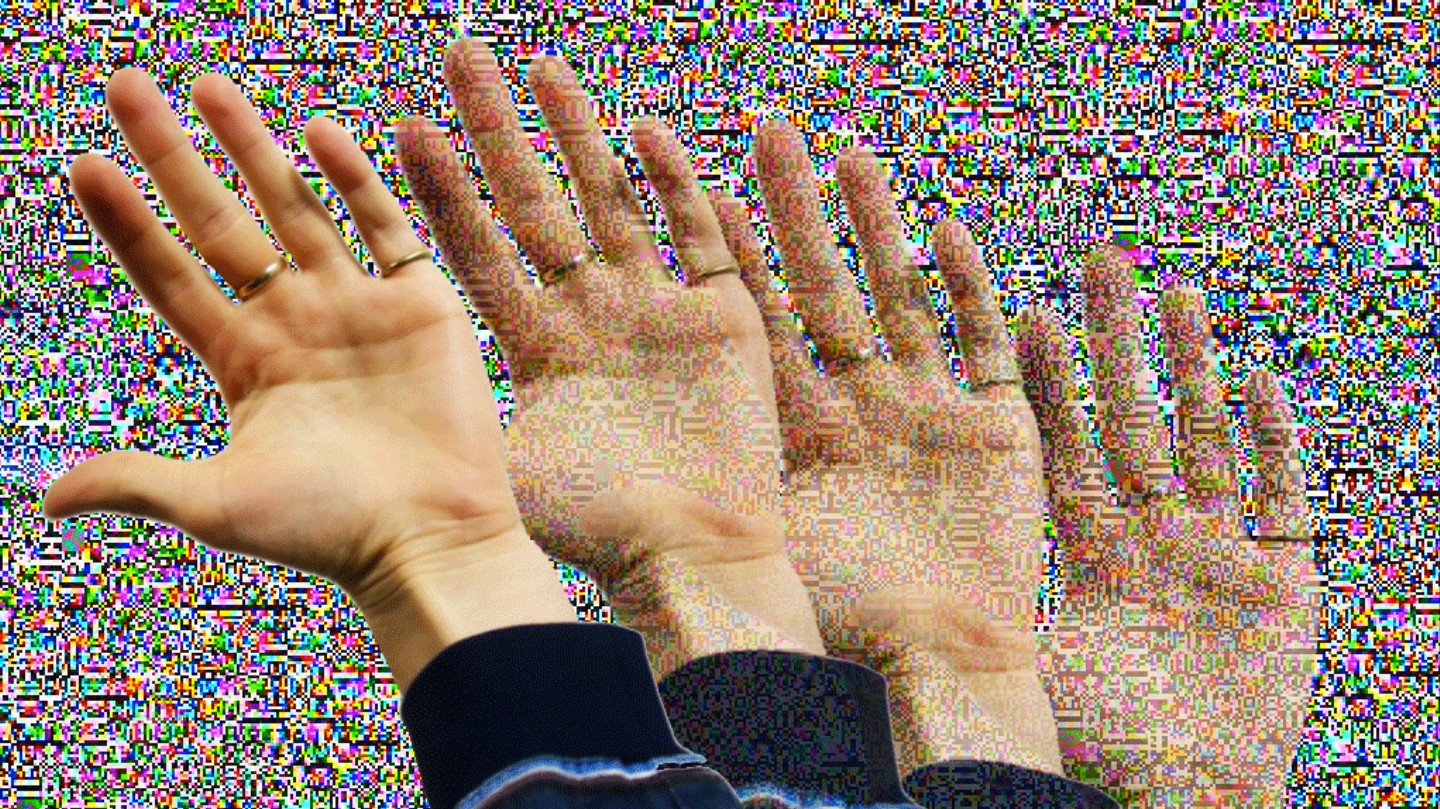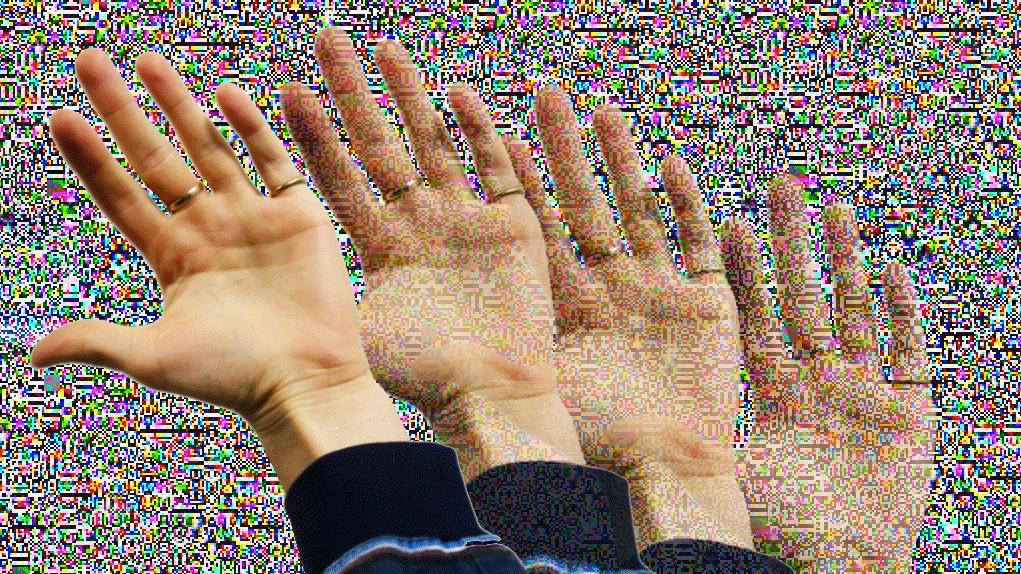
When Alex Miller, 21, was in high school he bought a bottle of over-the-counter cough medicine to get high. Earlier that day he’d also taken Adderall, the prescription medication for ADHD, something he did often because he was struggling with an amphetamine addiction at the time.
“So I had taken a stimulant in the morning and then took a dissociative later. This was a foolish combination,” he told me. “The next day, I woke up and I had slight trails in my vision. It was barely noticeable, but I instantly knew something was wrong because that side effect should have gone away by then.”
For weeks, Miller’s vision was affected—he saw tiny streaks of lights following objects as they moved. At first, it didn’t bother him too much, he said, as it was quite mild. As time went on, however, he became increasingly concerned as the trails just weren’t going away. That was four years ago, and since then his visual disturbances have only become a lot worse and more pronounced.
“Am I going to be blind when I’m 30? Am I not going to be able to walk down a busy street? Will I still be able to drive? That’s what goes through my mind,” he said.
Miller has Hallucinogen Persisting Perception Disorder (HPPD), a poorly understood condition that you can only get if you’ve taken hallucinogenic drugs. It can cause disturbing visual effects, like halos around objects, seeing things that aren’t there in your peripheral vision, and afterimages.
While not life-threatening, the condition affects daily life and can be so distressing that sufferers can end up with mental health issues (researchers believe that people with HPPD have a 50 percent risk of developing depression). While HPPD is most often associated with acid, it’s also linked to other substances, including MDMA and amphetamines.
There’s currently no cure for it; at best, the symptoms can be managed through a combination of medication and talk therapy. It can last for months or years, and in some cases, an entire lifetime. One study in the UK examined the case of a man in his late forties who had suffered from HPPD for over 25 years.
“There is no real great treatment for it,” said Dr. Henry Abraham, a psychiatry lecturer at Tufts University and one of the few scientists in the world researching HPPD. “We’ve tried all kinds of things, we’ve published papers, but there is no cure for HPPD other than mother nature.”
Miller said that, at first, he wasn’t even seeking proper treatment for his HPPD. “For a while, I was self-medicated, trying to distract myself from the problem,” he said. “I was using stimulants to do that. Everyone will say the best option for you is abstinence from drugs, but that can be a lot for some people.”
Miller, who’s now in a recovery program for his drug addiction, is currently taking quetiapine, an antipsychotic, to manage his symptoms and is finding that it’s working. He had previously taken benzodiazepine to some success; the psychoactive drug is often given to HPPD sufferers but carries its own set of risks.
“Benzos can be used safely as long as the person isn’t at risk of becoming dependent,” Abraham said. “It’s a first line of defense, but not a cure.” Abraham emphasized that anyone with HPPD should avoid recreational substances, especially marijuana, at all costs. He also added that his research has found that practicing mindfulness can be very helpful in alleviating symptoms and managing the condition.
HPPD is given such little airtime that most doctors don’t even know about it, despite it being a recognized condition in the Diagnostic and Statistical Manual of Mental Disorders, the medical bible used to classify and diagnose mental illnesses in the United States. “It’s what’s known as an orphan disease,” Abraham said, referring to the fact that drug companies aren’t interested in it because they can’t make money from it, and scientists can’t get funding to study it.
Abraham estimated that HPPD affects about 4 percent of people who’ve taken hallucinogenics, but as no large-scale studies have ever been done, how many people have it is still very much unknown. He also said that a very concerning aspect of the condition is the fact it can present in patients years after the drug use happened. Unlike what Miller experienced—waking up the next morning after a trip with symptoms—the onset of HPPD can develop long after the fact.
“If you’ve taken LSD in the past and you haven’t developed HPPD yet, that doesn’t give you a free pass,” Abraham said. “Many times people develop this syndrome after a heavy night of drinking or smoking weed.” That’s to say: If someone has ever taken acid or other hallucinogenics, a sesh further down the line can tip them over the edge and trigger HPPD.
Miller long suspected he had HPPD before getting an official diagnosis. He first went to see an eye doctor about it, but his tests came back fine, and was then sent for an MRI scan and to see a neuro-ophthalmologist. Abraham said Miller’s path to diagnosis is common, estimating that an average patient will go through about six doctors before finally finding someone who knows about the illness.
For that reason, Miller set up a Facebook group for people who have, or think they have, HPPD. In the group, people talk about what they’re experiencing and how HPPD affects their lives and share things that have helped them.
“Everyone in the [Facebook group] has something that a whole bunch of people out there have and are struggling with,” Miller said. “They’re struggling to the point that they’re seeking out these groups because the professionals don’t have the answers.”
Miller said that the real kick in the teeth with HPPD is not only that living with it is distressing, but that talking about it can be even harder because people aren’t sympathetic as it’s associated with recreational drug use and perceived to be self-inflicted. “People are reluctant to talk about HPPD because they feel there is a stigma attached to it,” he said. “And now I have this constant reminder of something I did when I was in high school and wasn’t thinking.”
[“Source-vice”]
